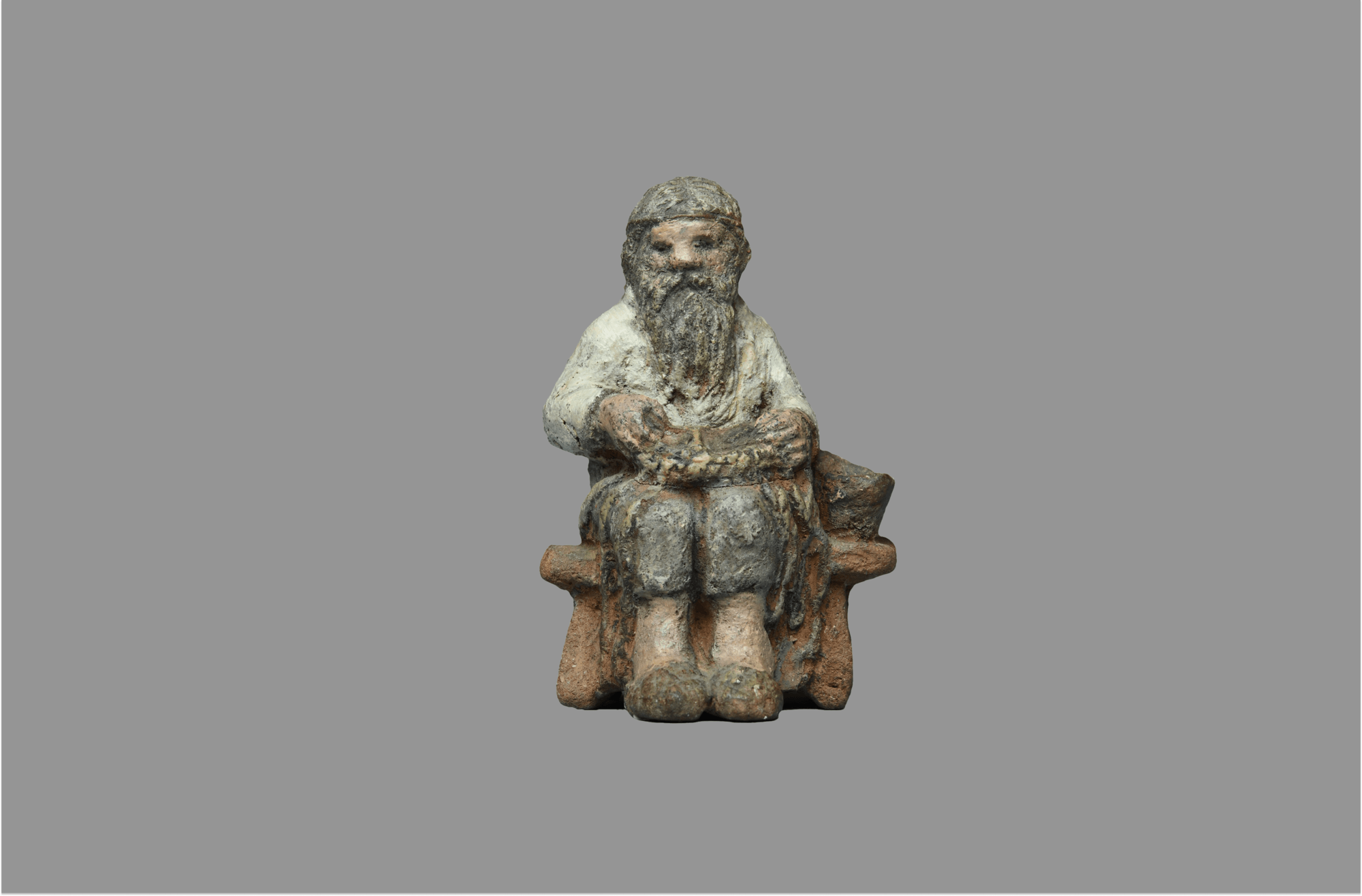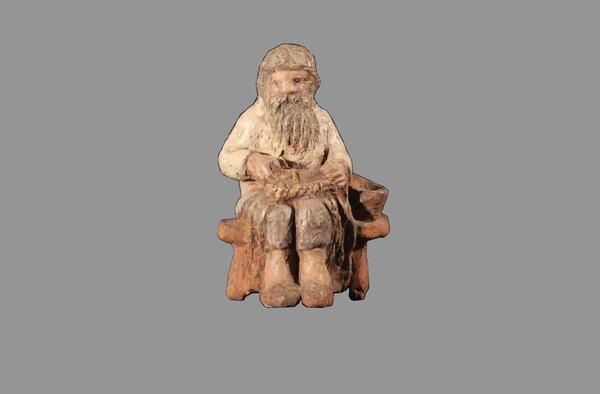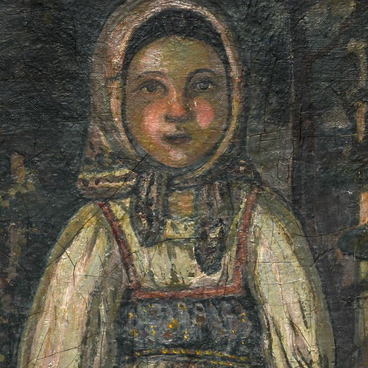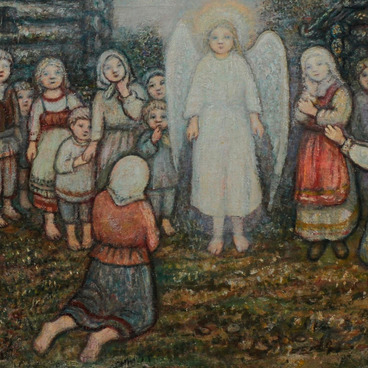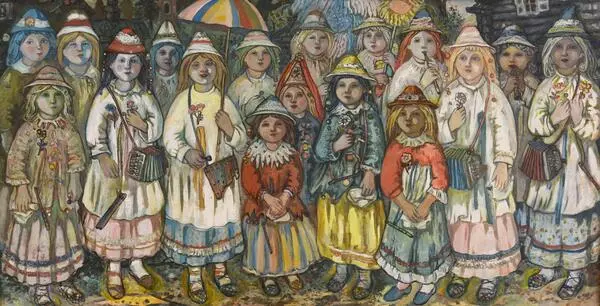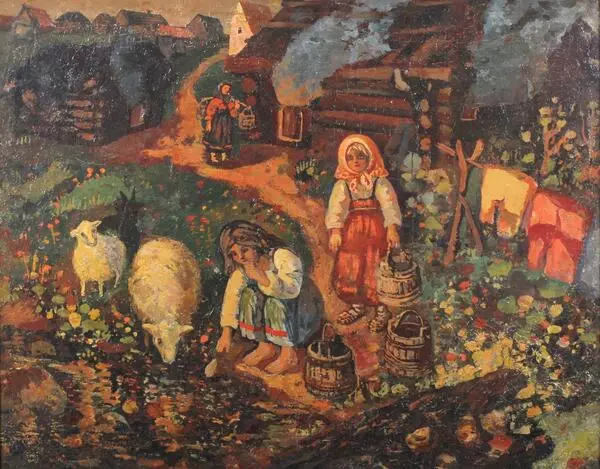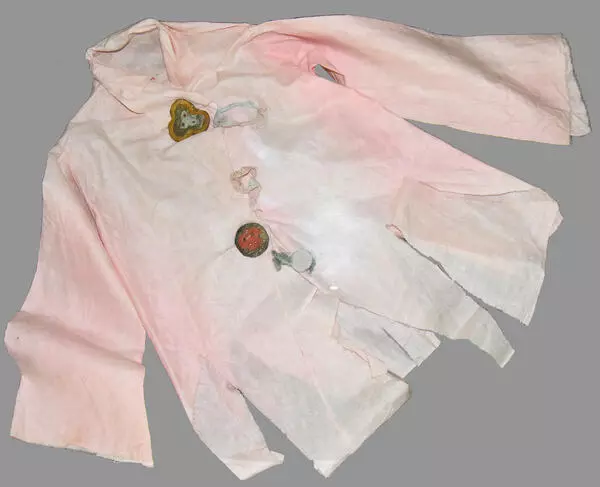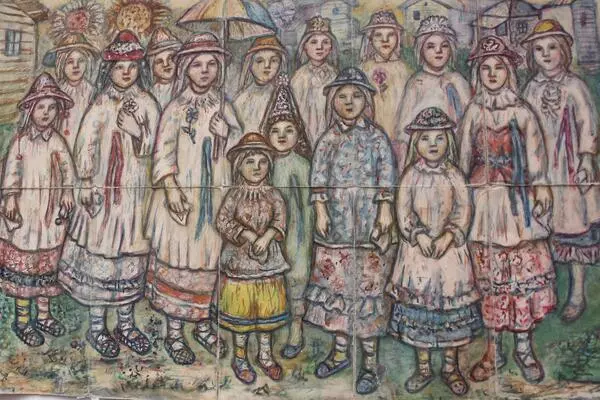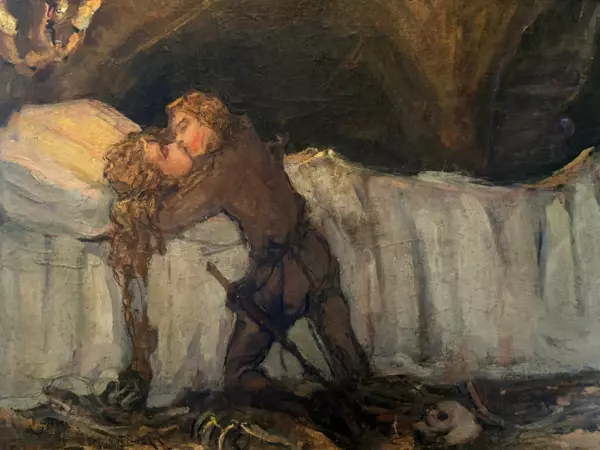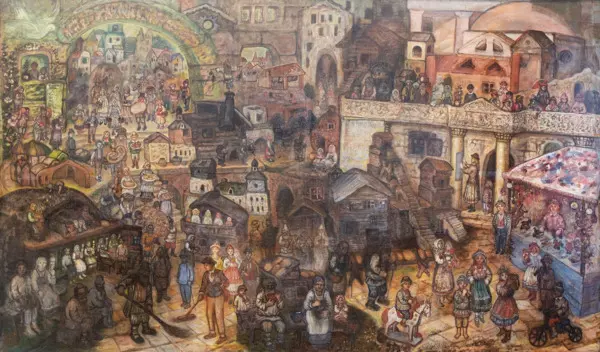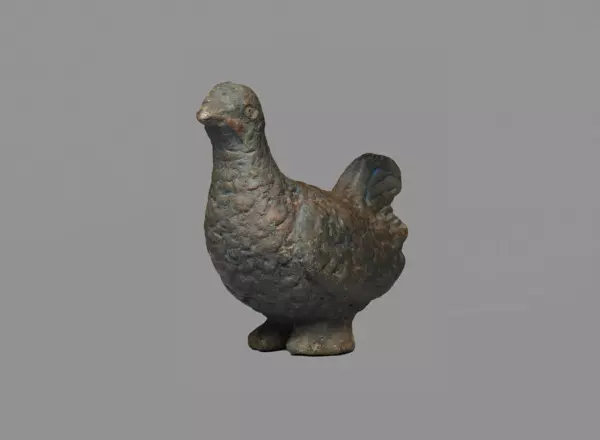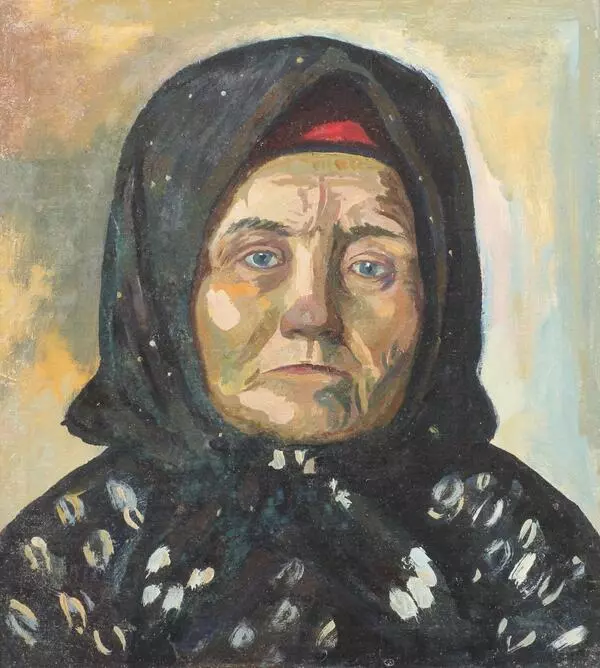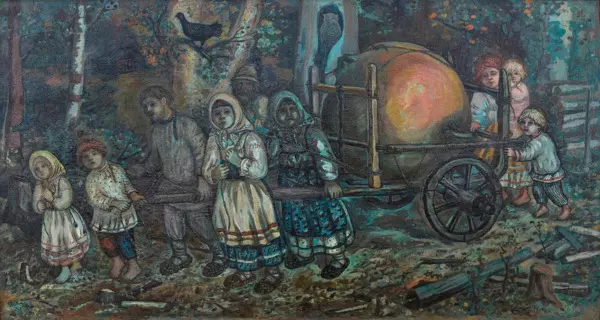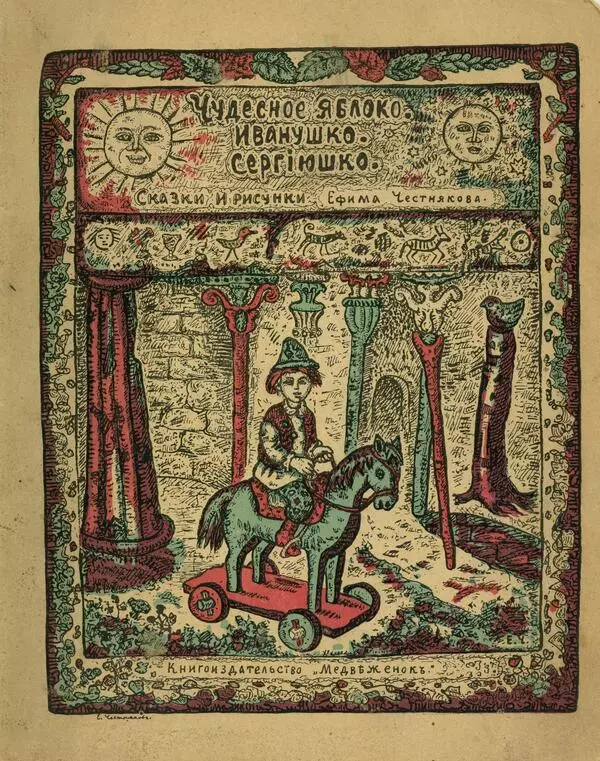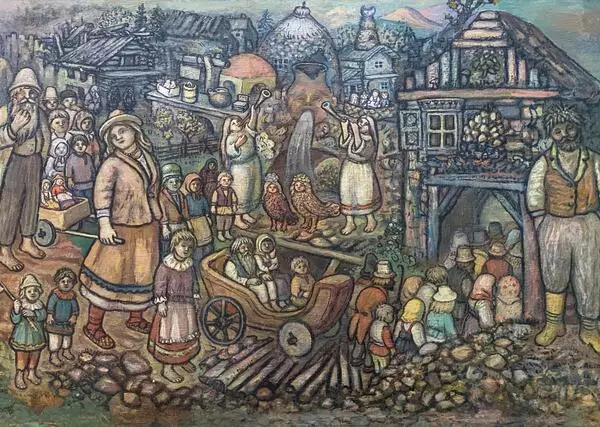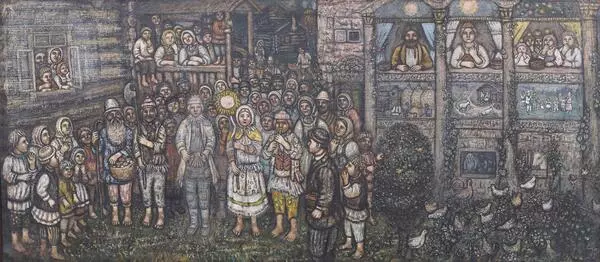Yefim Chestnyakov was a talented artist who not only painted and drew, but also sculpted. He was so gifted that he could work in almost all the arts disciplines. Features characteristic of his individual style are evident in clay figures depicting Shablovo farmers, which he called clay sculptures. Yefim Chestnyakov’s art is easily recognizable, it cannot be mistaken for works by other artists. Typically, they are small in size and are painted in a certain style, usually using watercolors. The artist often worked with cheap watercolors from schools.
In spite of its small size, the statuette of the elderly man making bast shoes is highly detailed and full of meaning. The old man in front of us has gray hair and a beard typically worn by elderly male peasants. He is sitting upright with his head up, his hands are busy making bast shoes from birch bark, a peasant’s ancient craft. He is completely focused on his work but for a calm kind glance he casts briefly at his viewers. His hands are weaving bast shoes, life’s essentials. In a peasant family, it was customary for elderly men, who found it difficult to perform labor-intensive field work, to make bast shoes. The old man is wearing an ordinary light-colored linen shirt and trousers. The figurine appears lifelike, in fact, in many ways, he looks like Yefim Chestnyakov’s grandfather Samoylo, whose memory the artist cherished and who was an expert bast shoe maker. In records of his childhood, he recalls an episode typical of family life:
‘The grandmother is pattering about while sorting,
while oborka is rustling in grandfather’s hands.
He is mending a bast shoe,
ridding it of defects…
While his kotochig is tapping away,
he is talking and telling jokes…’
In this excerpt, our contemporaries will encounter many unfamiliar words that are no longer in use at present. In his literary works, Yefim Chestnyakov always aimed to describe villagers’ daily life as accurately as possible while preserving the characteristic style of folk speech. Oborka is a linen cord made of flax or bast fibers for bast shoes, and kotochig is an iron tool, resembling a stitching awl, for weaving them. All the clay figurines molded by Yefim Chestnyakov were used in performances at his clay figures theater, which he had set up for villagers. For instance, he created The City of CordOn art work with its multiple statuettes depicting people, animals, birds as well as various clay buildings and trees. As part of it, researchers believe that the artist made approximately 400 different figurines, unfortunately, most of them have not survived to this day. The statuettes were able to move and thus be part of a scene on stage.
In spite of its small size, the statuette of the elderly man making bast shoes is highly detailed and full of meaning. The old man in front of us has gray hair and a beard typically worn by elderly male peasants. He is sitting upright with his head up, his hands are busy making bast shoes from birch bark, a peasant’s ancient craft. He is completely focused on his work but for a calm kind glance he casts briefly at his viewers. His hands are weaving bast shoes, life’s essentials. In a peasant family, it was customary for elderly men, who found it difficult to perform labor-intensive field work, to make bast shoes. The old man is wearing an ordinary light-colored linen shirt and trousers. The figurine appears lifelike, in fact, in many ways, he looks like Yefim Chestnyakov’s grandfather Samoylo, whose memory the artist cherished and who was an expert bast shoe maker. In records of his childhood, he recalls an episode typical of family life:
‘The grandmother is pattering about while sorting,
while oborka is rustling in grandfather’s hands.
He is mending a bast shoe,
ridding it of defects…
While his kotochig is tapping away,
he is talking and telling jokes…’
In this excerpt, our contemporaries will encounter many unfamiliar words that are no longer in use at present. In his literary works, Yefim Chestnyakov always aimed to describe villagers’ daily life as accurately as possible while preserving the characteristic style of folk speech. Oborka is a linen cord made of flax or bast fibers for bast shoes, and kotochig is an iron tool, resembling a stitching awl, for weaving them. All the clay figurines molded by Yefim Chestnyakov were used in performances at his clay figures theater, which he had set up for villagers. For instance, he created The City of CordOn art work with its multiple statuettes depicting people, animals, birds as well as various clay buildings and trees. As part of it, researchers believe that the artist made approximately 400 different figurines, unfortunately, most of them have not survived to this day. The statuettes were able to move and thus be part of a scene on stage.
